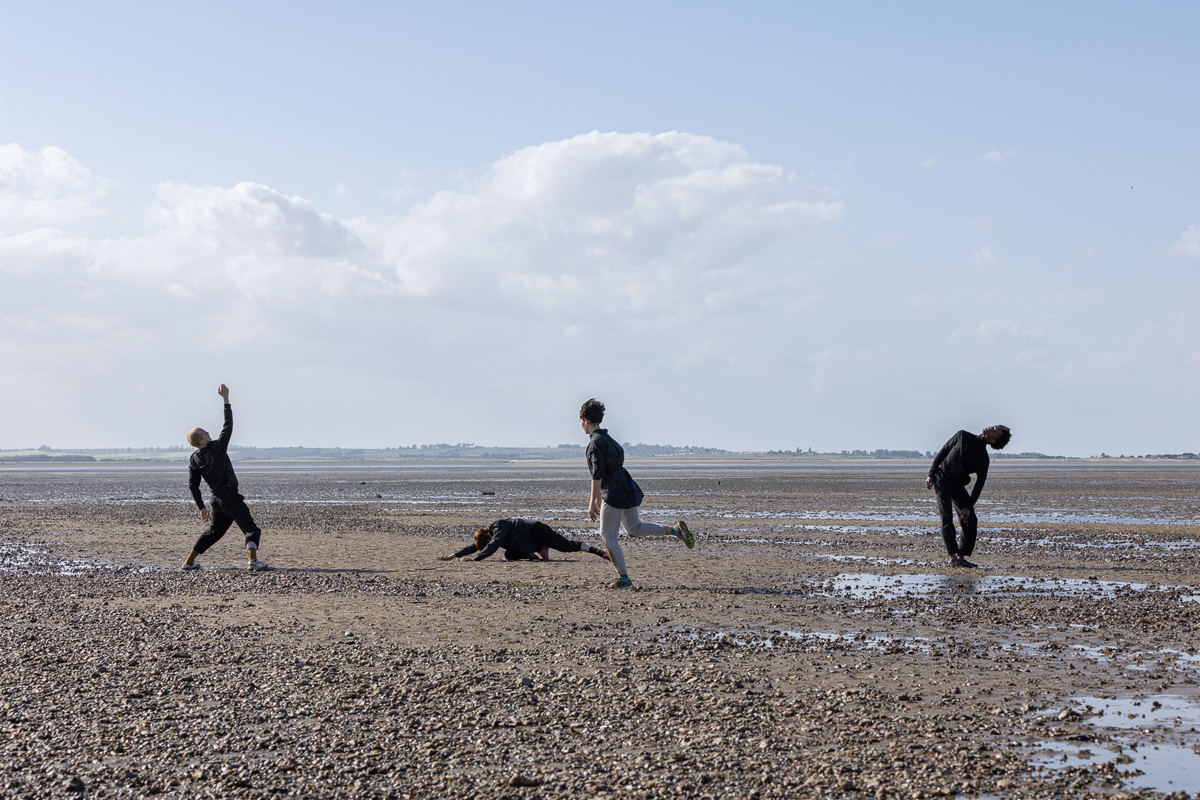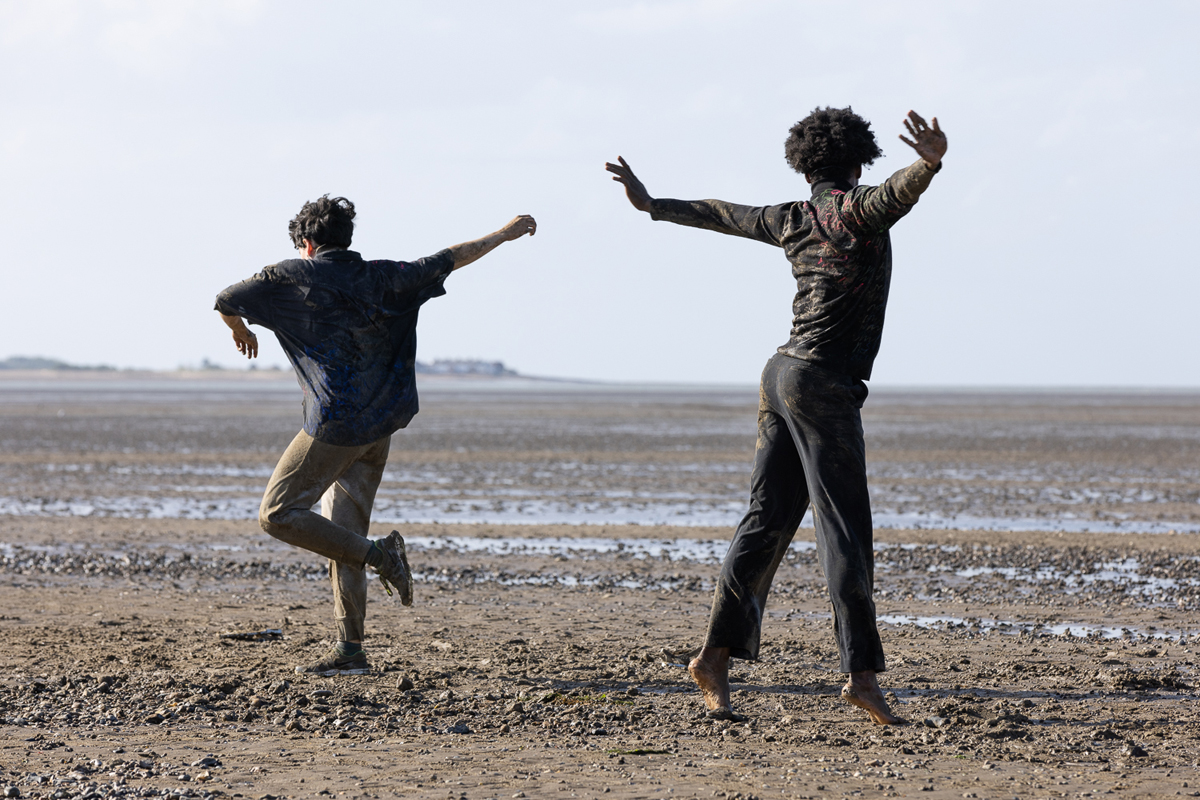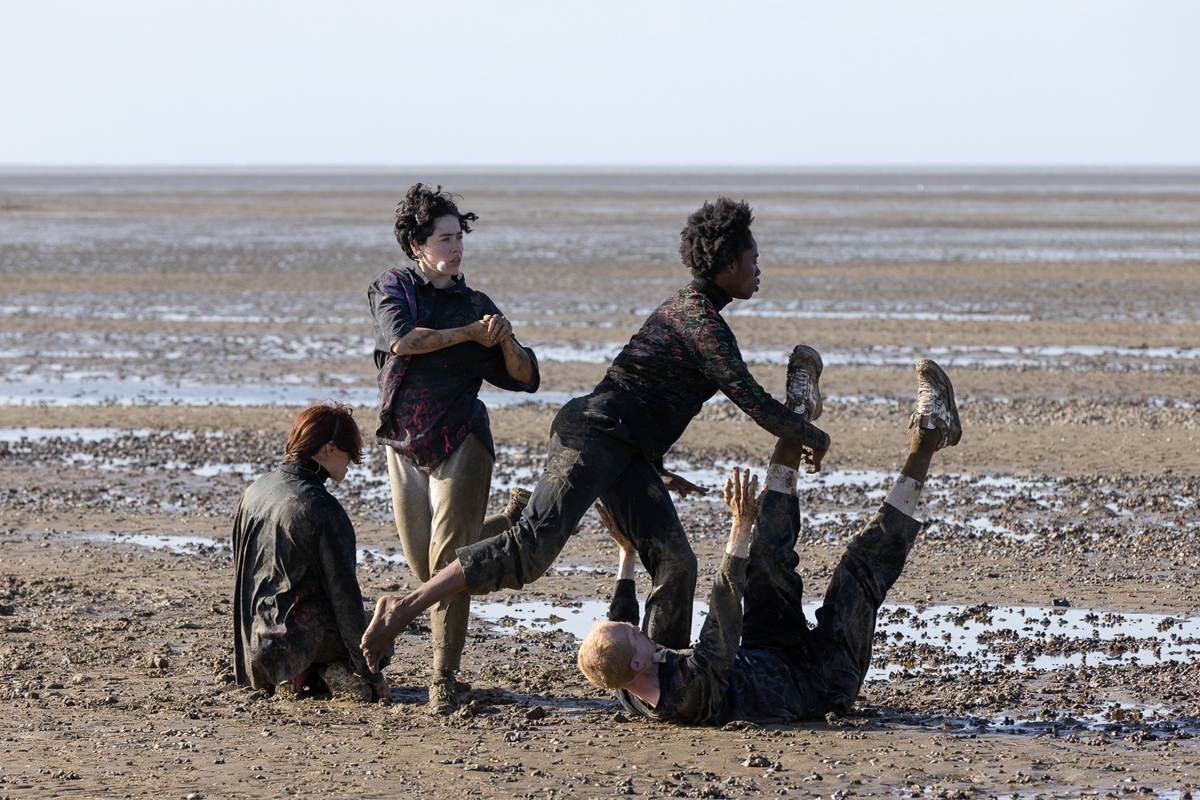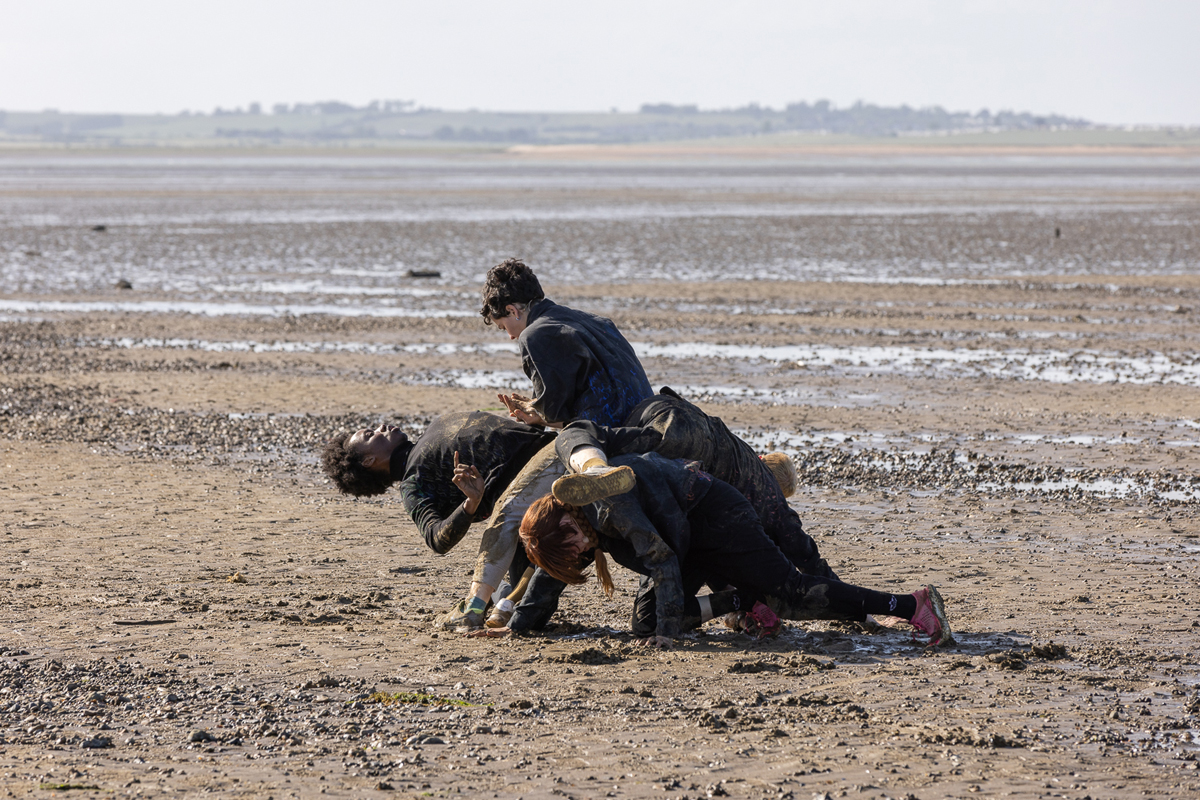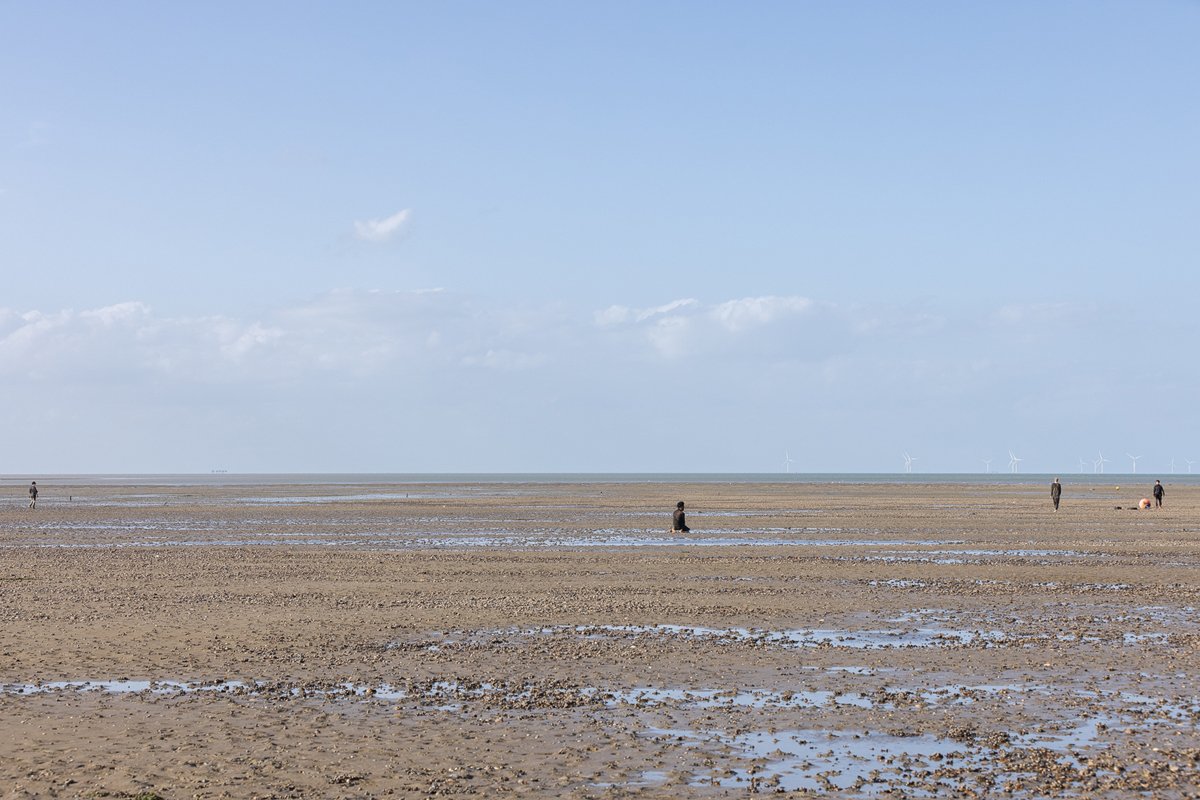shell of hope, in cycles (2022)
with Chess Boughey, Yos Clark, Patricia Langa, Cian McConn
duration 30 mins
Location Seasalter Beach, Kent
For the Whitstable Biennale, Nicole Bachmann has brought together movement and voice to explore the forming of subjectivity and relationships at our present time.
Informed by the pressing issues related to hostile immigration policies and water pollution, the performance takes place in Seasalter beach by the southern coastal town of Whitstable, an area intensely affected by these matters.
In what way does the concept of borders impact the development of identity in such a place?What is the role of the physical, natural and historical environment in these issues?Thinking about how emotions manifest in (this) space, four performers represent and enable states of mind connected to grief, anger, fragility and optimism and create a narrative of continuous and osmotic separateness and togetherness, by the water.
Interweaving, crossing, separating and coming together as a group, while articulating vulnerability, otherness, not-belonging, displacement but also of kinship, sisterhood, mending and recovery, the performance unfolds in a polyphonic embodiment of perspectives on being a migrant.
Rather than trying to break language in an act of rebellion, the work attempts to create a new story that intertwines with the one of the sea, another essential character in this work.
Always in us and surrounding us, we are born in it. It brings us together and separates us only to connect us again later in various ways: water holds the atavic memory of everything in the world; has a mood on its own and a natural inability to contain any border.Â
Its fluidity and dark depths offer solutions, in the best feminist and new materialism spirit, beyond the type of binary thinking that is traditional of white patriarchy, which has led to catastrophic outcomes in regards to pollution, underwater ecologies, vulnerability of the coastal environment and ability to create sustainable and healthy ecosystems. In the performance, this awareness and feelings merge with the embodied narratives of migration in the natural, rough setting, leaving us to wonder about our positioning in this matter.
In addition to the relationship between the bodies, Bachmann has a strong focus on the voice, forming a chorus, concordant and dissonant at various times. This amalgam of voices adds to the intensity to the piece, whereby the audience participates in the voices ‘being taken into account’, or otherwise, not being heard.
Bachmann’s working method is based on improvisation and modularity and each of the two public events will vary from the next. This together with the climatic conditions, the changing tides and winds, means that the two performances will have similarities, but each will manifest difference.
Supported by The Swiss Arts Council Pro Helvetia and the Swiss Cultural Fund
